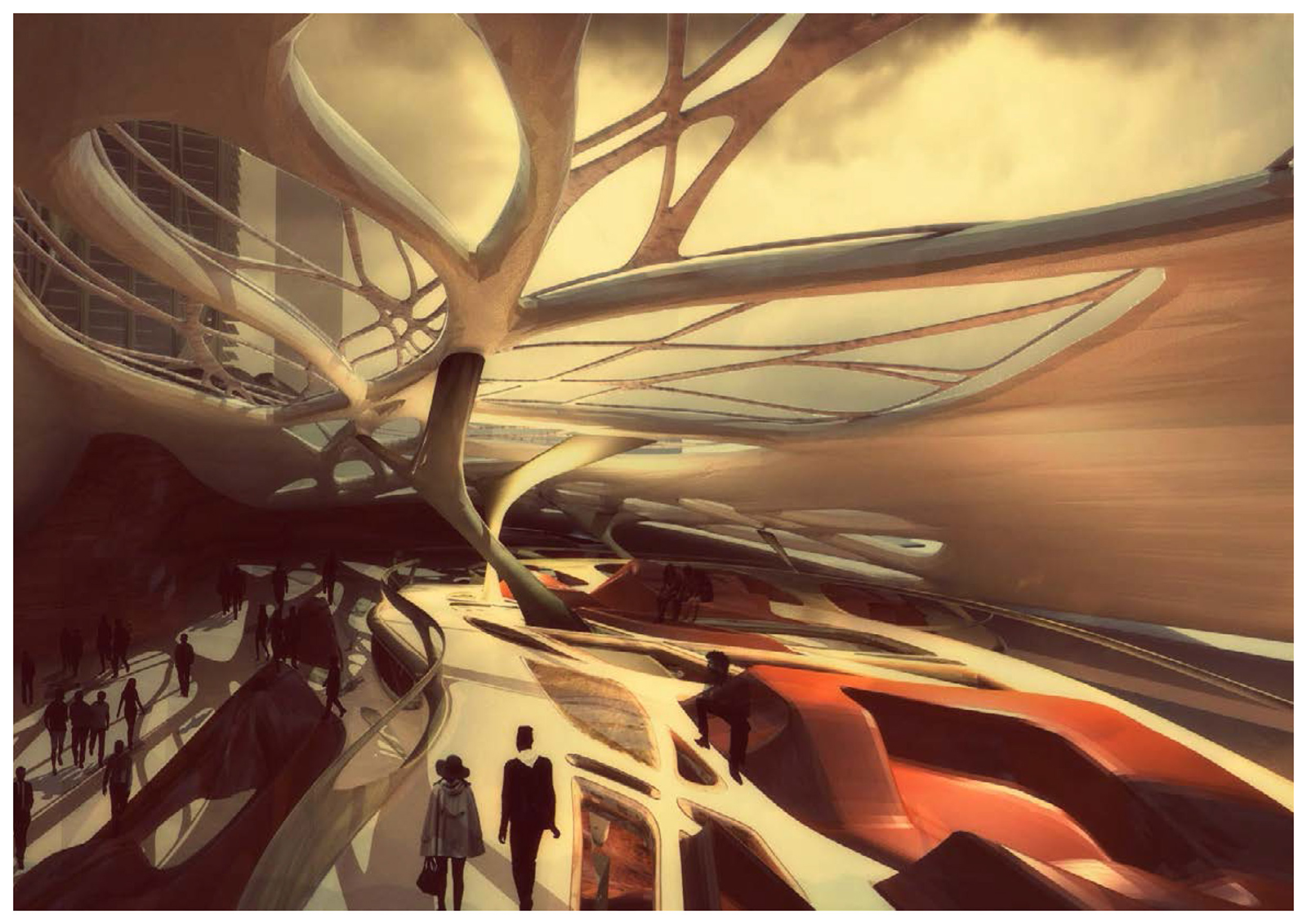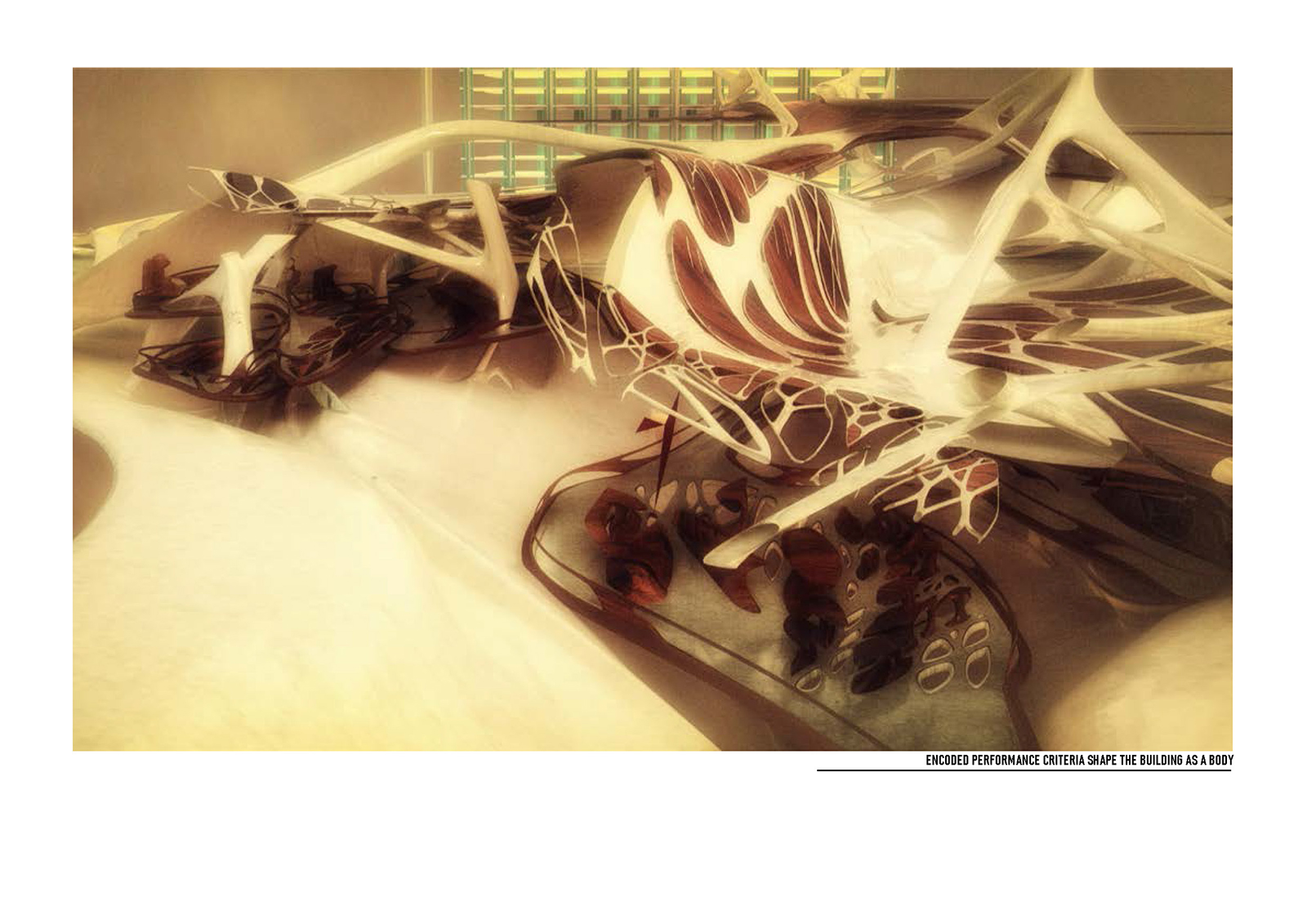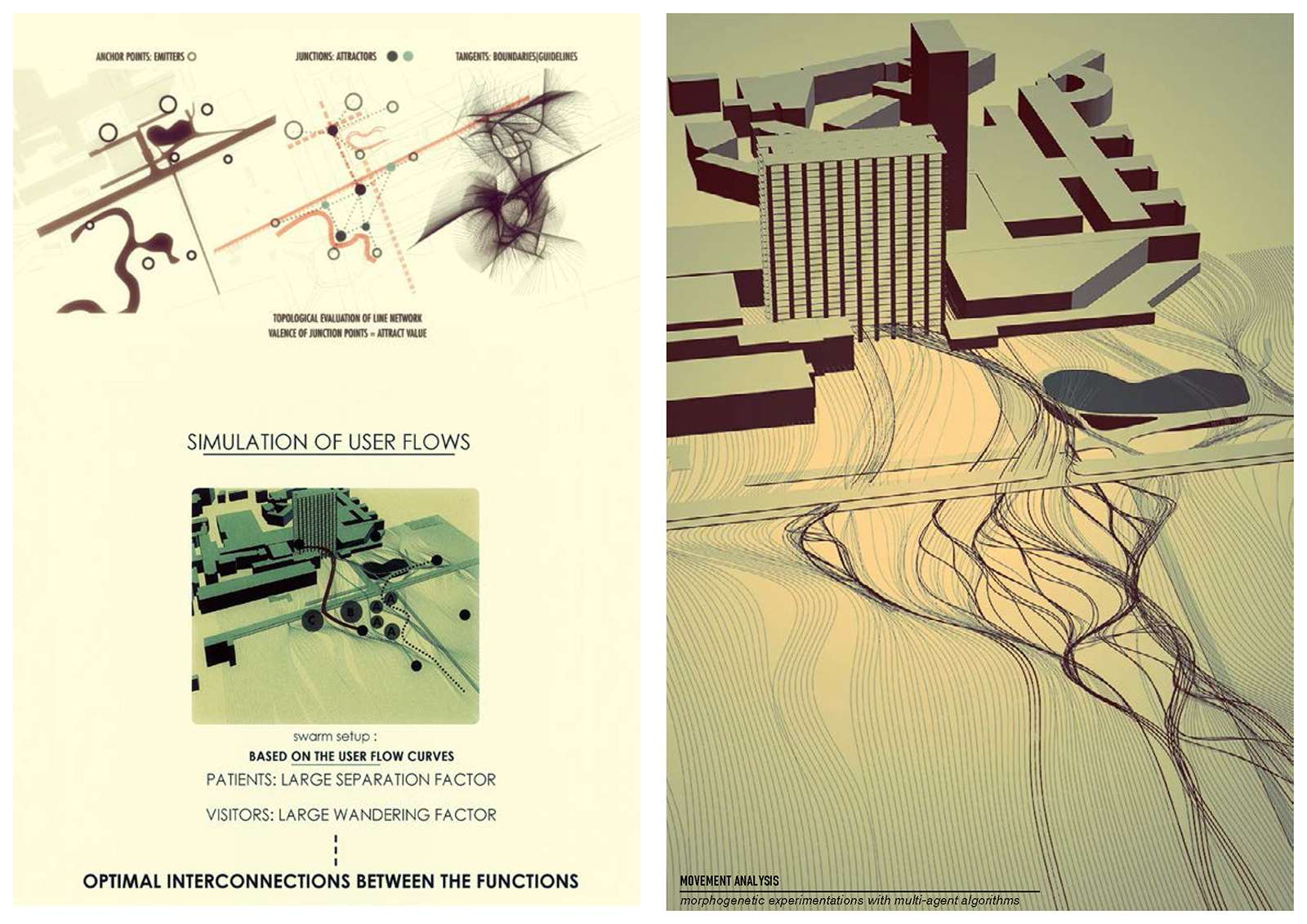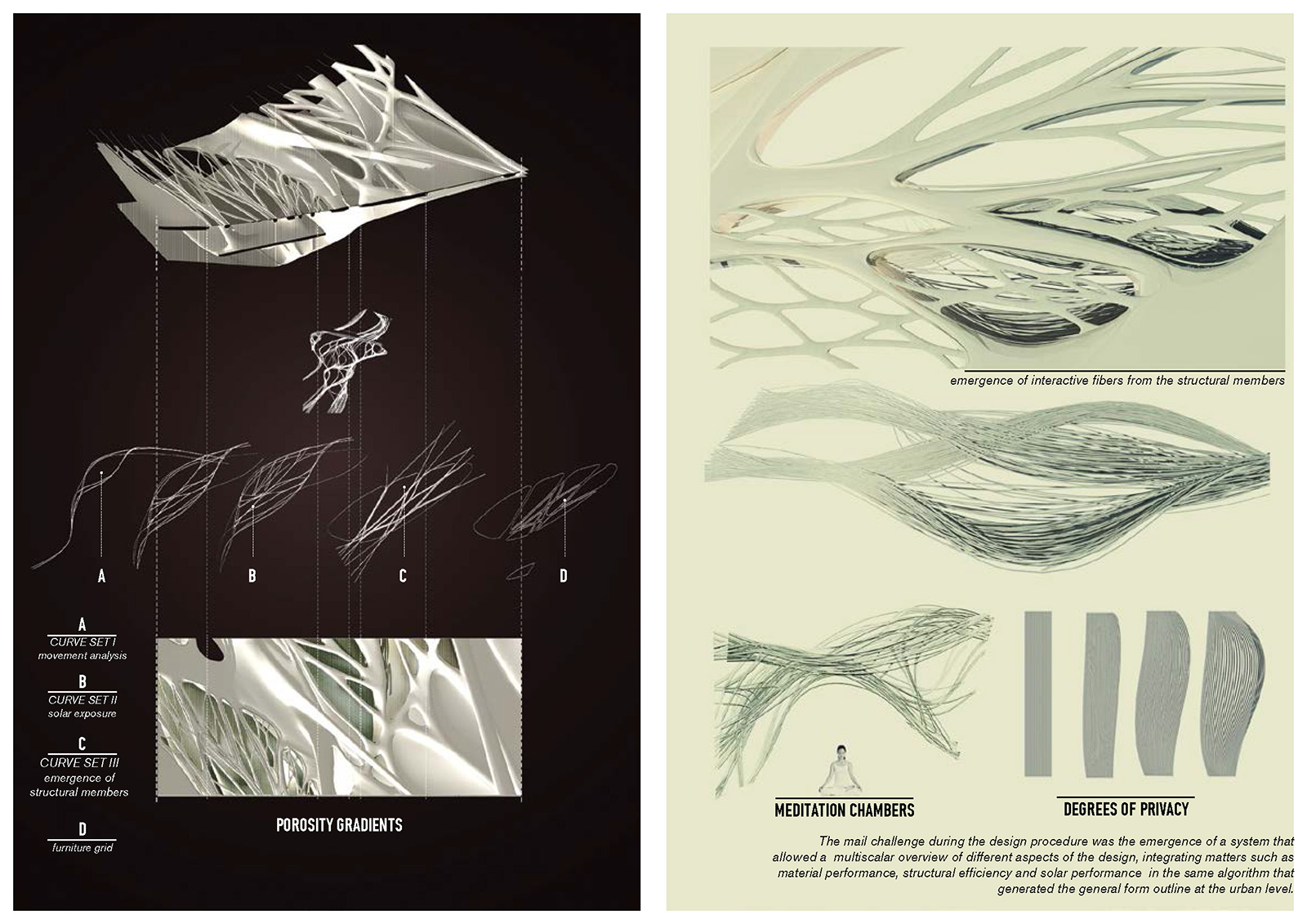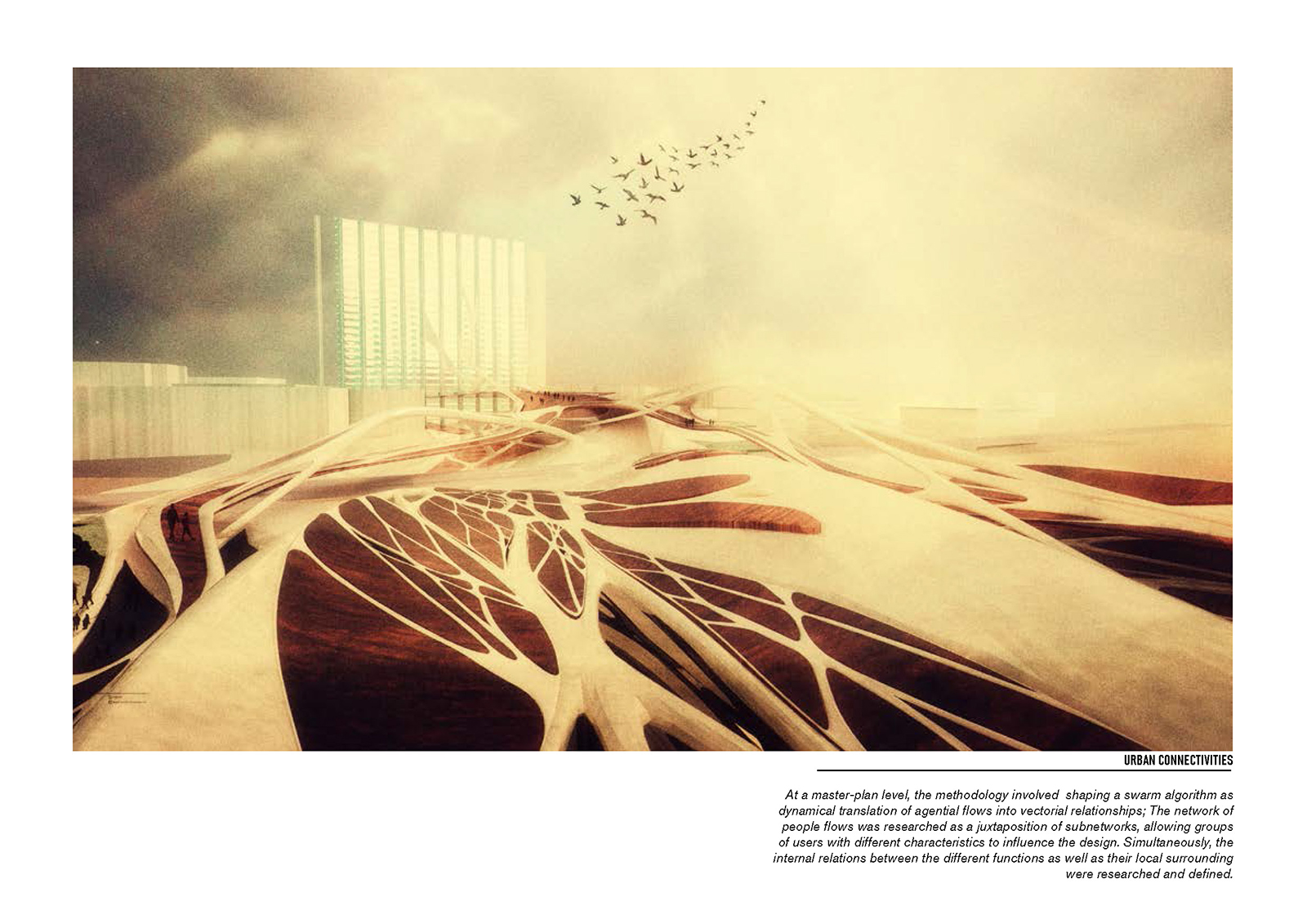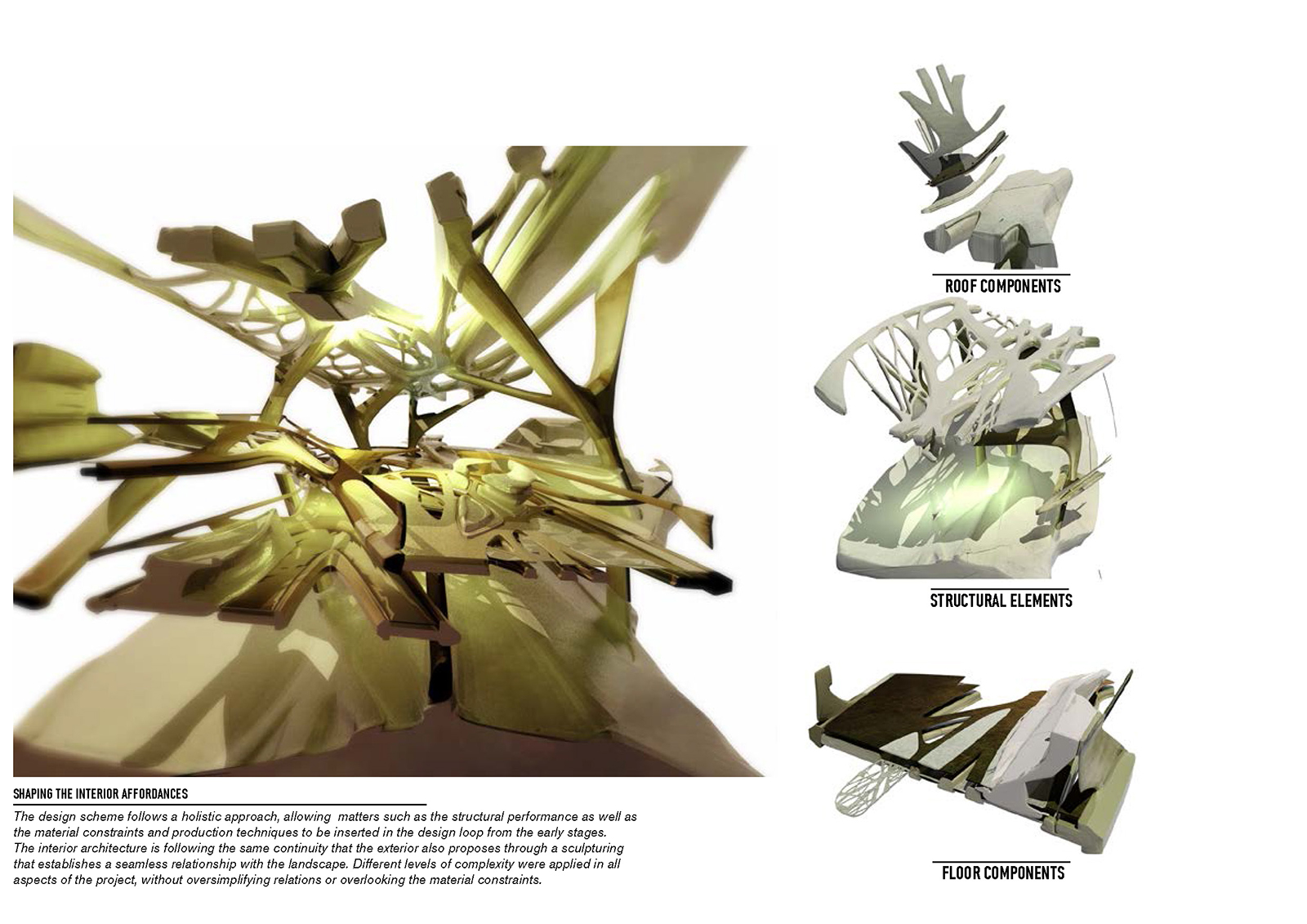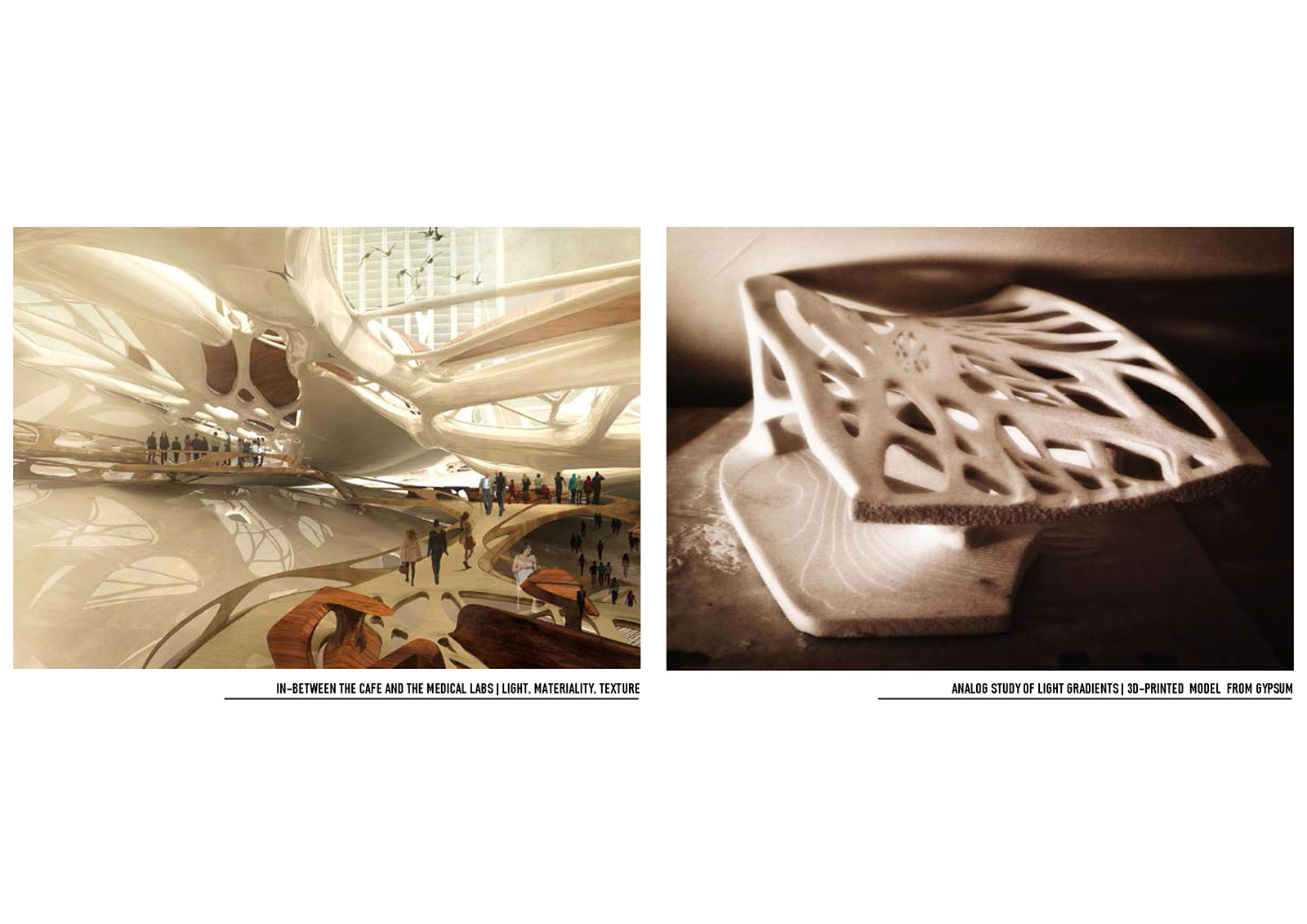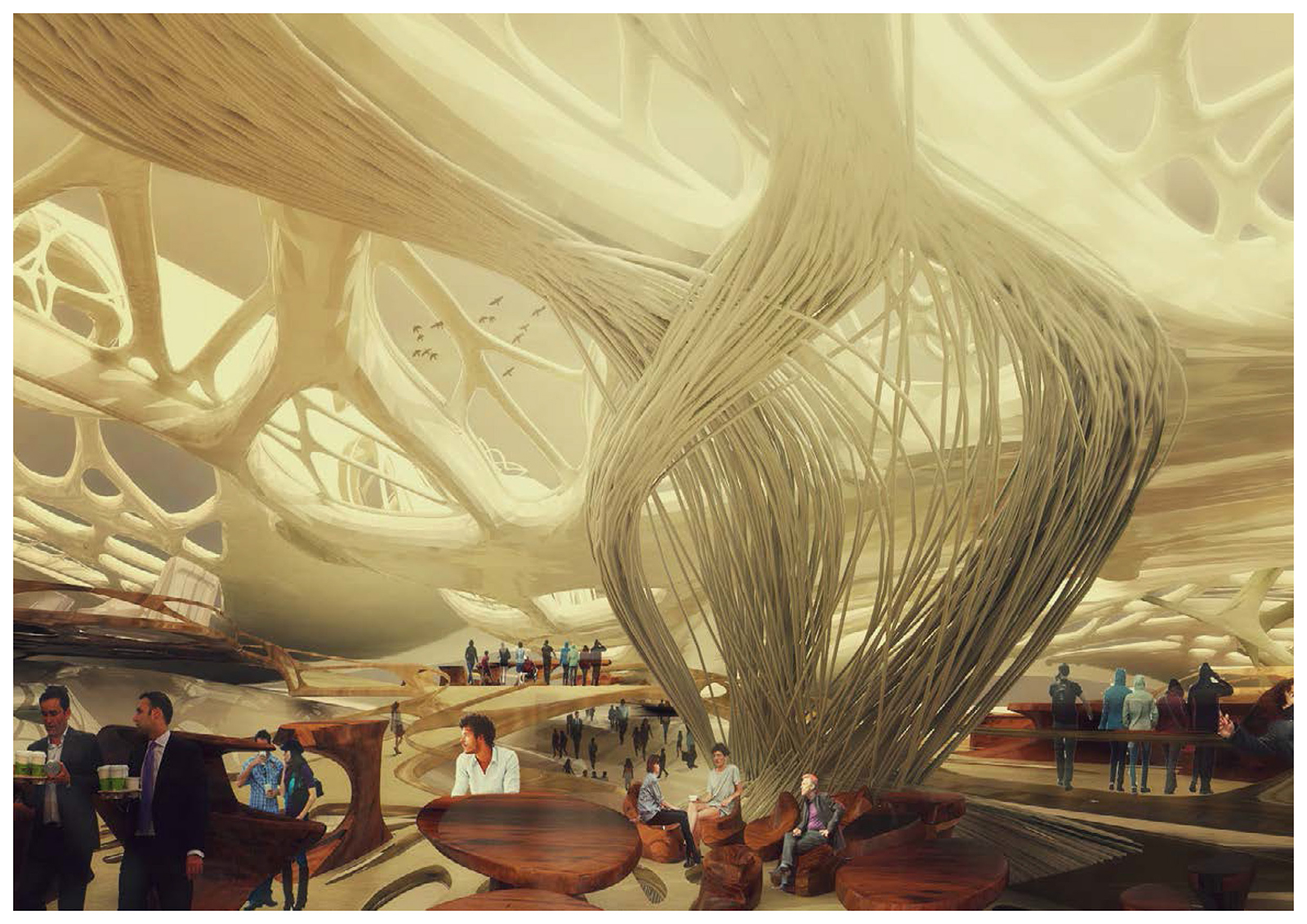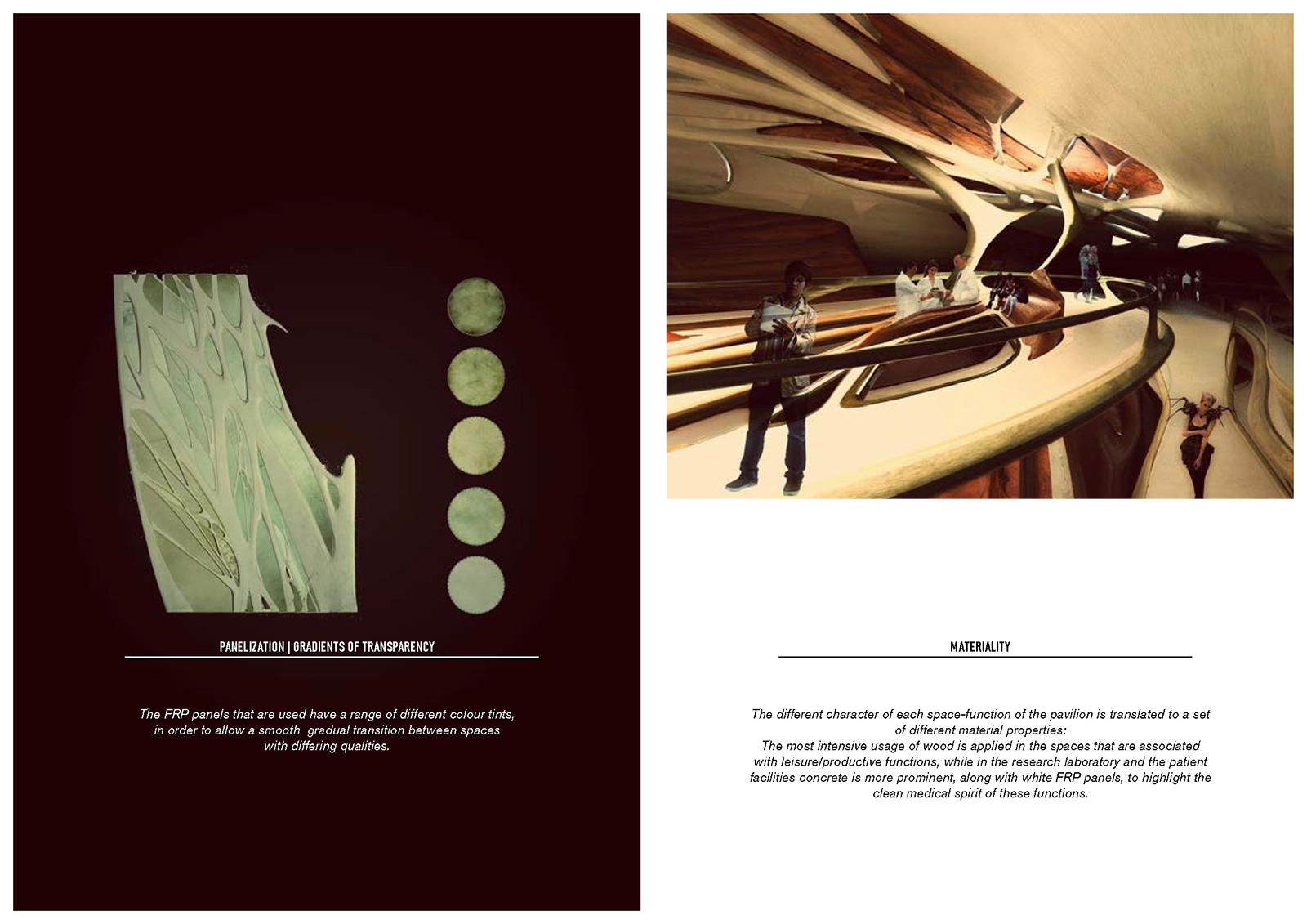The assignment of the graduation studio was the development of a self-sustaining pavilion for the Expo 2025. Within this context, the pavilion is designed as an attempt to redefine the traditional notion of a medical environment, and it explores the embodiment of electromyographical sensors in wearable technologies that are connected to architectural space, opening a new field of possibilities for experimentation on sensoric extension and externalisation of our nervous system. These spatial manifestations of how the body is associated with its environment hover in an intermediate space where tangible experimentation converge with virtual explorations, forming the idea of an analog and digital Augmented Living.
In terms of design strategy, the design algorithm is embracing multi-agent form finding methodologies. The aim is the creation of perceptible and imperceptible connections with important elements of the city, enabling the bottom-up emergence and amplification of movement trails, as well as the creation of seamless, fluid transitions between the landscape and the building. At a master-plan level, the methodology involves shaping a swarm algorithm as dynamical translation of agential flows into vectorial relationships; The network of people flows is researched as a juxtaposition of subnetworks, allowing groups of users with different characteristics to influence the design. Simultaneously, the internal relations between the different functions as well as their local surrounding are researched and defined.
The design procedure is centred around the emergence of a system that allows a multi scalar overview of different aspects of the design, integrating matters such as material performance, structural efficiency and solar performance in the same algorithm that generated the general form outline at the urban level. The interior architecture is following the same continuity that the exterior also proposes through a sculpturing that establishes a seamless relationship with the landscape.

